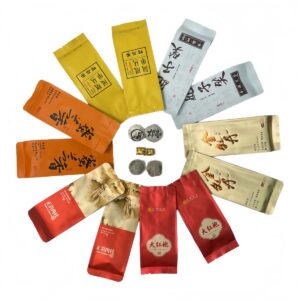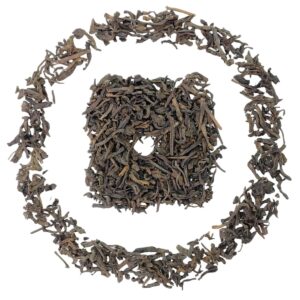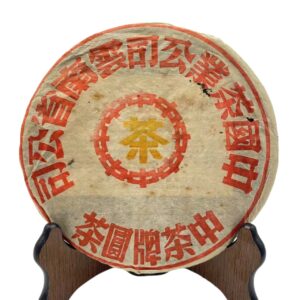What is Pu’er Tea? A Detailed Guide to Pu’er Tea
The Timeless Allure of Puer Tea
Puer tea, a fermented treasure from China’s Yunnan province, has captivated global tea lovers for centuries. Often shrouded in myths—like the misconception that it’s a type of black tea (puerh black tea)—this ancient brew holds a story of trade routes, cultural exchange, and modern wellness trends. Whether you’re a tea novice or a seasoned connoisseur, let’s unravel the secrets of puer tea’s history, its astronomical value, and how to savor it like a pro.
1. The Roots of Puer Tea: A Journey Through Time
Ancient Origins in Yunnan
Puer tea’s story begins over 1,700 years ago in the misty mountains of Yunnan. Here, towering ancient tea trees (Camellia sinensis var. assamica), some over 1,000 years old, thrive in biodiverse forests. By the Tang Dynasty (618–907 CE), these leaves were already being traded along the Tea Horse Road, a network of caravan routes stretching from Yunnan to Tibet, India, and beyond. Tea bricks of puer served as currency, exchanged for horses and salt, and even offered as tribute to emperors.
The Rise of a Global Icon
During the Ming (1368–1644) and Qing (1644–1912) dynasties, puer tea became a symbol of luxury. Its popularity surged in the 1970s with the invention of ripe puer (shou cha), a method using controlled microbial fermentation to mimic decades of natural aging in just months. Today, Yunnan’s tea mountains—like the famed Six Ancient Tea Mountains of Xishuangbanna—remain pilgrimage sites for tea enthusiasts.
2. Legends and Modern Myths: Stories Behind Puer Tea
Cultural Icons & Million-Dollar Auctions
- Emperor Qianlong’s Obsession: The Qing Dynasty ruler famously declared, “I’d rather forgo three meals than miss a cup of puer,” cementing its status as a royal health elixir.
- The Tea That Broke Records: In 2002, a 100-year-old puer cake owned by Chinese writer Lu Xun sold for **¥1.2 million per gram**, surpassing gold prices. Vintage puer, like the 2004 Green Cabbage series, now fetches over 5,000percake,withrareQingDynastybatchespricedat∗∗1.3 million** for a 2kg brick.
Myth Busting: Is Puer Tea a Black Tea?
Despite its dark hue, puer is not a black tea. The confusion stems from mistranslations:
- Black Tea (Hong Cha in Chinese): Refers to fully oxidized teas like Darjeeling or Keemun.
- Puer Tea: Classified as Dark Tea (Hei Cha) due to its post-fermentation process, where microbes (not enzymes) transform the leaves over years.
3. Crafting Puer: Nature’s Alchemy vs Human Innovation
Raw Puer (Sheng Cha): Time’s Artwork
- Sun-Drying & Compression: Fresh leaves are withered, pan-fired to halt oxidation, and sun-dried—a method unchanged for millennia.
- Aging: Raw puer evolves over decades, developing flavors from floral freshness to earthy complexity. A 20-year-old cake might whisper of dried apricot and damp forest floor.
Ripe Puer (Shou Cha): Speed-Aged Mastery
Invented in 1973, the wet-piling technique accelerates fermentation. Leaves are piled, moistened, and turned to cultivate microbes like Aspergillus, creating a mellow, chocolatey brew in months.
Black Tea’s Contrast: Unlike puer’s microbial magic, black tea relies on enzymatic oxidation, converting polyphenols into theaflavins for bold, malty notes.

4. Tasting Puer: A Flavor Odyssey
Raw vs Ripe: A Sensory Guide
- Raw Puer: Young versions (1–5 years) offer grassy sharpness and astringency, akin to green tea. With age (10+ years), they mellow into honeyed sweetness and medicinal depth.
- Ripe Puer: Think velvety textures with flavors of dark chocolate, ripe dates, or even leather.
Health Secrets
- Gut Health: Microbial fermentation produces probiotics that aid digestion.
- Heart Wellness: Studies suggest puer’s theabrownins reduce cholesterol absorption.
5. Brewing Puer Tea: Western-Friendly Rituals
Gongfu Style Simplified
- Rinse & Awaken: Pour boiling water over compressed leaves (5g per 150ml), then discard the first infusion to “wake” the tea.
- Short Steeps: Start with 10-second infusions, increasing by 5 seconds each round. A high-quality puer can yield 10+ brews.
- Cold Brew Hack: Steep 5g in cold water overnight for a smooth, sweet iced tea.
Teaware Tips
- Clay Pots: Yixing teapots enhance ripe puer’s richness.
- Gaiwan: Porcelain cups highlight raw puer’s aromatic layers.
6. Why “Puerh Black Tea” Misleads Consumers
The label puerh black tea often confuses Western shoppers. Here’s how to navigate:
- Look for “Dark Tea”: Authentic puer will specify Yunnan Dark Tea or Hei Cha.
- Avoid Imitations: Low-grade “puer” may blend non-Yunnan leaves or artificial flavors.
Conclusion: Puer Tea—A Legacy in Every Sip
From the misty peaks of Yunnan to modern wellness rituals, puer tea bridges ancient tradition and contemporary allure. Its ability to age like wine, coupled with gut-friendly benefits, makes it a standout in the tea world. Whether you’re savoring a century-old brick or a freshly pressed cake, each cup whispers tales of caravan routes, imperial courts, and nature’s slow alchemy.
Ready to Explore? Start with a ripe puer for approachable richness or a young raw cake to witness time’s transformative power. Remember: true puer isn’t just a drink—it’s a journey.



